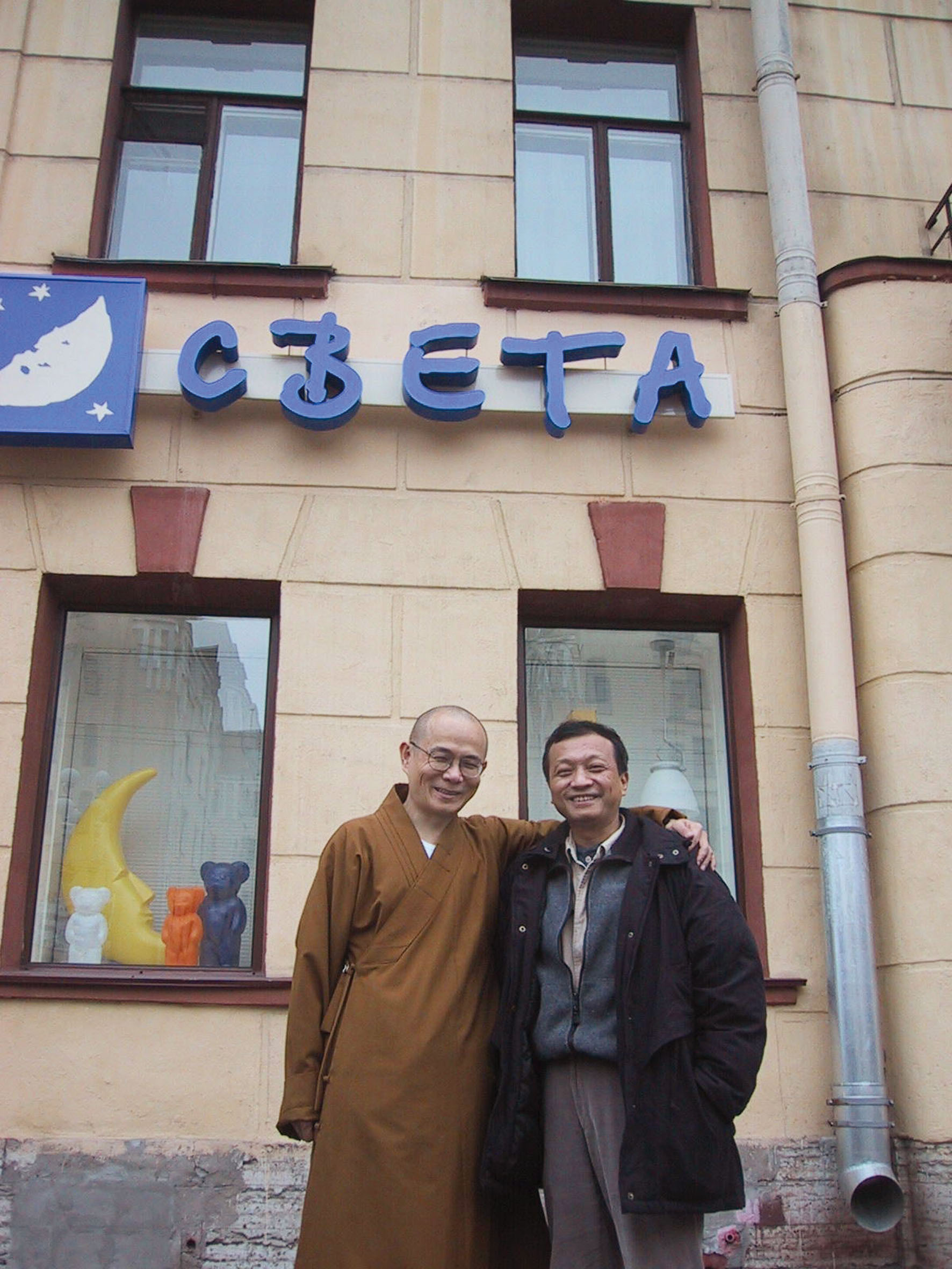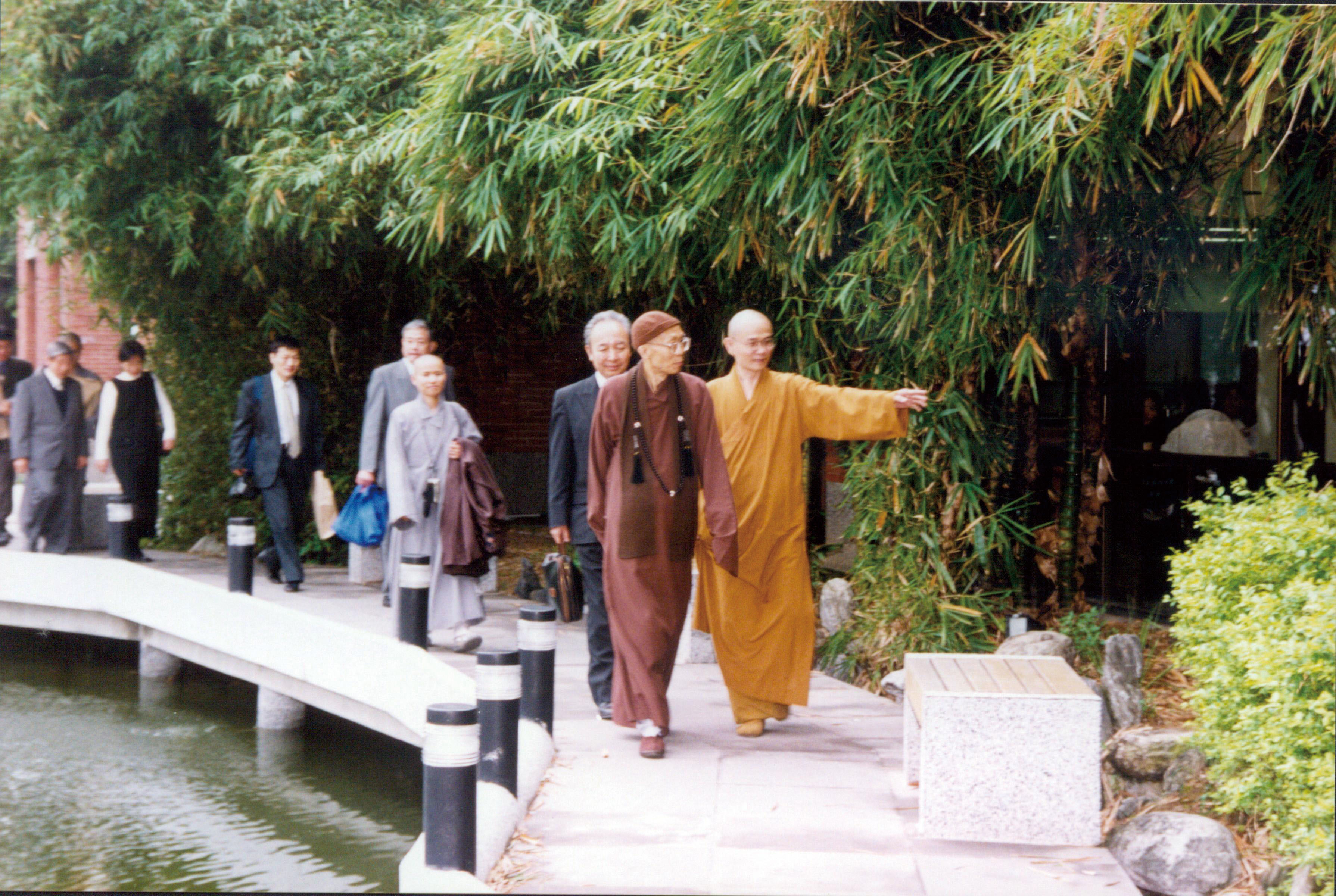30@chibs.edu.tw
三十而立
法鼓佛教學院校長
惠敏法師

1965年,由中國文化學院的創辦人張其昀先生創立之「中華學術院佛學研究所」,於1978年禮聘文學博士聖嚴法師為所長並且出版《華岡佛學學報》,帶動台灣佛學研究風氣。1984年,因中國文化大學校方政策變化,停止招生。1985年,聖嚴法師於北投佛教文化館,創立「中華佛學研究所」,繼續招生。於2006年,中華佛學研究所以25年辦學經驗為基礎,全國第一所向教育部申請成立獨立的單一宗教研修學院,名為「法鼓佛教研修學院」(2008年,更名為「法鼓佛教學院」),並且將招生與教學工作移交「法鼓佛教學院」,成為以研究為主的機構。敝人身為第二屆研究生,於此中華佛學研究所30周年紀念特刊刊行之前,略述回顧與展望之感想一二,就教方家。
當1981年,IBM(萬國商業機器)推出世界上第一台採用 Intel 處理器及 Microsoft 作業系統的個人電腦(Personal Computer,PC),為建立近代電腦歷史新的里程碑時,巧合的是,中華學術院佛學研究所也開始招考第一屆研究生,成為台灣培養佛學研究人才的搖籃。從此巧合,中華佛學研究所師生們卻有因緣參與一些佛學研究與資訊時代的重要計畫。例如︰1998年,由「北美印順導師基金會」贊助「中華佛學研究所」成立「中華電子佛典協會」(Chinese Buddhist Electronic Text Association,簡稱 CBETA),建立合乎資訊時代之佛學典籍資料庫,以網路以及光碟形式發行,提供各界作非營利性使用,促進佛學研究發展。以及1999年,創辦人聖嚴法師與國立台灣大學陳維昭校長簽定「佛學數位圖書館暨博物館」合作計畫。
資訊科技促成人類社會從工業社會進步到資訊社會,興起於1990年代的網際網路(Internet)所建構的網路社會與形成「網際網路空間」(Cyperspace),對個人、團體、國家與全球等層次產生巨大的影響,而且對於社會的經濟、工商業、政治、教育、傳播、文化、藝術與娛樂各方面都帶來革命性的改變。近年來,第二代網際網路(所謂Web 2.0)的概念與相關的技術架構及軟體成為新的資訊潮流,其特點是可以讓使用者透過分享(Share)與互動(Interactive),讓資訊內容可因使用者的參與(Participation)而隨時產生,經由網誌(Blog)、分享書籤(Sharing Tagging)、維基 (Wiki)和社群網絡(Social network)等新功能達成迅速分享的效果,進而產生豐富的資源。

俄文CBETA意為光亮,正好看到一家取名CBETA的燈具店。
At a CBETA light fixture store in Russia.
最近,一些科學界的研究人員已經開始運用Web 2.0廣大開放的性質,隨時展示他們的工作,被稱為「Science 2.0」。 此種很合乎佛教之「自覺、覺他、覺行圓滿」精神的Web 2.0,除了增進學術研究工作之外,也改善許多教導、學習與評量的模式。
如今,中華佛學研究所歷經三十年所建立佛學研究的成就,似乎也合乎孔老夫子所自述「吾十又五而志於學,三十而立,四十而不惑,五十而知天命,六十而耳順,七十而從心所欲,不逾矩。」(《論語.為政》)六個人生階段之「三十而立」意義。此句意謂年三十,則學有所成,例如︰何晏《論語集解》:「立,有所成也」以及程樹德《論語集釋》:「竊謂立止是學有成就之義」所解釋。面對未來Web 2.0之Science 2.0學術研究的時代,如何繼續開展,則需要眾多諸大善知識的指教與參與。
謹以此拙文,祝福中華佛學研究所,法身常在,法輪常轉。
2009年10月5日
序於法鼓佛教學院

為聖嚴法師導覽台北藝術大學。
Master Sheng Yen visited the Taipei University of the Arts.
30@chibs.edu.tw
Coming of Age at 30
Venerable Huimin
Director of DDBC

對日新月異的科技產品永遠保持高度興趣。
Always open-minded on new technology.
Mr. Zhang Qiyun, founder of the Chinese Culture University, founded the Chung-Hwa Academy Institute of Buddhist Studies in 1965. He invited Master Sheng Yen, Doctor of Literature, to be the director of the Institute in 1978 and concurrently launched the publication of the Hwa-Kang Buddhist Journal, facilitating the advancement of Buddhist research in Taiwan. However, Chinese Culture College, because of its change of policy, stopped recruiting students for the Institute in 1984. This prompted Master Sheng Yen to found the Chung-Hwa Institute of Buddhist Studies in Beitou in 1985 to continue enrolling students. With 25 years of experience in academic education, Chung-Hwa Institute of Buddhist Studies applied to the Ministry of Education (MOE) in 2006 and received permission to found the first single-religion college in Taiwan, which was named Dharma Drum College of Buddhist Studies (renamed Dharma Drum Buddhist College in 2008). Thereafter, the Chung-Hwa Institute of Buddhist Studies transferred recruiting and teaching tasks to Dharma Drum Buddhist College and now dedicates itself entirely to Buddhist research. I was a graduate of the second year class of the Chung-Hwa Institute of Buddhist Studies. In this special publication to celebrate the 30th anniversary of the Institute, I would like to talk about some of its developments in the past and its future outlook, and I look forward to your comments.
In 1981, IBM launched the first personal computer installed with the Intel CPU and Microsoft operation system, which marked a new milestone in the recent history of computer development. In the same year the Chung-Hwa Institute of Buddhist Studies started recruiting students for its graduate program to foster talents in Buddhist studies and research. Blessed with this coincidence, the faculty and students of the Institute had the opportunity to participate in several important projects related to the incorporation of Buddhist research with information technology. For example, in 1998, the Institute, under the sponsorship of the Yin Shun Foundation, established the Chinese Buddhist Electronic Text Association (CBETA) to set up an electronic database for Buddhist canons compatible. This database was published on the Internet and further distributed in CD-ROM format for non-profit use in order to facilitate the development of Buddhist studies and research. In 1999, the founder Master Sheng Yen signed an agreement with Mr. Chen Weizhao, President of National Taiwan University, to collaborate on the project of the Digital Library and Museum of Buddhist Studies.
Information technology has advanced our society of industrial production to one of information technology. The rise of the Internet in the 1990s, which gave birth to the internet network and cyberspace, has had a tremendous impact on many aspects of our world, on each individual, group, nation, and the global society as a whole. It has also brought about revolutionary changes in the fields of economy, industry, business, politics, education, communication, culture, art, and entertainment. In recent years, the concept derived from the second generation of network technology, known as Web 2.0, together with its relevant technology framework and software, has aroused a new trend in information technology with such distinctive features that users can share and interact with other users through their participation in web blogs, shared tagging, Wiki and other social networks. This innovation has expedited the process of sharing and therefore enriched our world with abundant resources.
Recently, researchers in the sciences have begun to utilize the accessibility of Web 2.0 for displaying their latest works at any time they wish, which is referred to as Science 2.0. In this respect, Web 2.0 actually serves a purpose in line with the Buddhist spirit of self-awakening, awakening others, and attaining the perfection of awakening and practice. It has not only facilitated academic research work but has also improved the formats in which teaching, study, and evaluation have been carried out in the past.

圖書資訊館的心經影壁包含電腦內碼在內,有二十種文字。
Heart Sutra in 20 different languages is engraved on the Wall in front of the Library and Information Center .
The Institute’s achievement in Buddhist research over the past thirty years in a way mirrors a Confucian saying: “To have come into my own at 30.” This saying is taken from what Confucius said about his state of mind in the six different stages of his life, which goes: “At fifteen, I aspired to learn; at thirty, I came into my own; at forty, I had no delusions; at fifty, I knew my destiny; at sixty, I could tell what the truth was in all I heard; at seventy, I could follow the wishes of my heart without doing wrong” (verse 4, chapter 2 of Confucius Analects). The saying implies that one completes one’s learning at the age of thirty. As stated in He Yan’s Lunyu Jijie (Collected Explanations of the Analects), it says, “‘To come into one’s own’ means to achieve an accomplishment.” And cited in Cheng Shude’s Lunyu Jishi (Collected Interpretations of the Analects), he says, “As far as I am concerned, to ‘come into one’s own means to obtain achievement in study.” In an era when academic research employs the use of Science 2.0 of Web 2.0, further exploration and continuous development requires the talent and participation of many people. With this article we wish success to the Chung-Hwa Institute of Buddhist Studies for all its endeavors in spreading the Dharma and sustaining the correct teaching in the world.
Written at Dharma Drum Buddhist College on October 5, 2009 as a preface
Doctor of Letters, University of Tokyo
President of Dharma Drum Buddhist College Professor of Taipei
National University of the Arts




